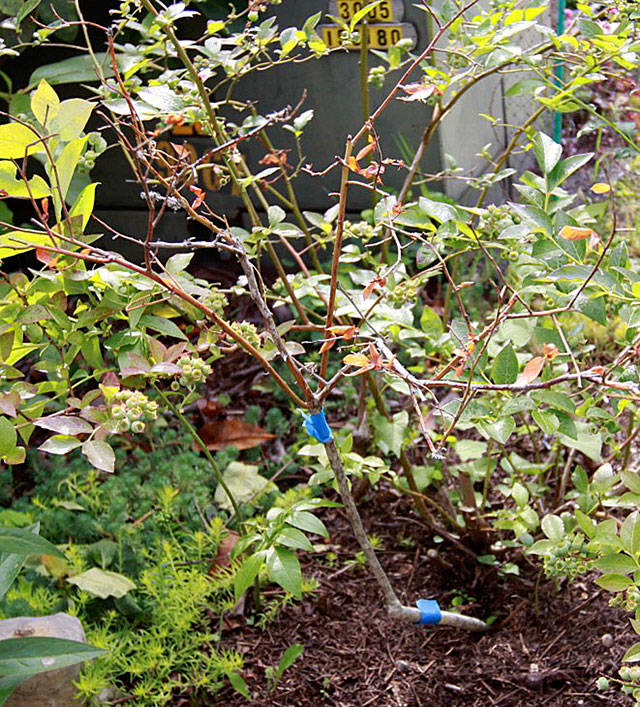Many people are hesitant to prune their trees and shrubs, worrying that they may not know when to prune or how to do a ‘good enough’ job. But not pruning can be as detrimental to your plants as ‘novice’ pruning.
The basics of pruning will be discussed in the next two “Get It Growing” articles. This week’s article focuses on “When to Prune” and next week’s focuses on “How to Prune.”
The best time to prune most trees and shrubs is during the dormant season (typically November through March on the North Olympic Peninsula) after temperatures have dropped and freezing temps are possible, and before new growth begins in spring.
We prune during the dormant season because the loss of leaves allows the gardener to better view the structure of the plant and because the plant has not invested its energy into new growth that will be lost during pruning. The dormant season is also a time of minimal insect and disease activity. If possible, prune late in the dormant season to avoid hard freezes that can damage a newly pruned plant.
Pruning late in the dormant season also is closer to the time that plants break dormancy and leaves begin to emerge, a time when healing of wounds will be best.
Apple and pear trees are hardier than other fruit trees and can withstand pruning earlier in the dormant period. February is a recommended month to prune apple and pear trees.
Exceptions to pruning in the dormant season
Prune spring-flowering shrubs right after they bloom to avoid cutting off the coming season’s flower buds. This is in contrast to shrubs that bloom after June that typically should be pruned in the dormant season.
Prune cherry trees in August to prevent bacterial infections from entering pruning wounds.
Prune trees that “bleed” (sap flow) from wounds, such as birches, walnuts, elms, dogwoods and some maples in August. Bleeding is normally not harmful to the plant but can be disconcerting to the gardener.
Prune conifers in the spring during their growth period. Conifers never become fully dormant and pruning during the winter causes new growth that can be damaged by cold temps.
If you decide to prune after the dormant season, realize that removing large quantities of foliage after a flush of growth, usually in late spring or early summer, tends to retard tree/plant growth. Pruning prior to leaf emergence in the spring encourages rapid development.
The only time you should avoid general pruning is in late summer or early fall. Pruning in late summer or early fall (before plants are dormant) can cause vigorous regrowth, which in some species may not harden off by winter and be susceptible to winter cold damage.
Do not undertake pruning while the temperature is below freezing.
Additional information can be found online by searching “pruning trees” at wsu.edu.
Gardening goings-on
Please plan to attend the Thursday “Brown Bag” series from noon-1 p.m. in the Commissioners’ Meeting Room in the Clallam County Courthouse. These lectures are open to the public and free of charge, but donation to help support the programs are appreciated. On Sept. 14, Master Gardener Muriel Nesbitt will discuss “Growing and Using Leeks.” Learn how wonderful leeks are to incorporate into one’s cooking repertoire.
Plant clinics continue in Sequim: Master Gardeners will be at the Woodcock Garden from 9:30 a.m.-12:30 p.m. on Thursday, Sept. 14. Plant clinics are opportunities for gardeners to get help and information for solving gardening problems. So bring you gardening questions, samples from the problem plants and garden pests and ask a Master Gardener for help.
This is also a great time to visit our demonstration gardens when the Master Gardeners are doing what they love: working in the gardens. The Master Gardeners are hard at work in the Woodcock Demonstration Garden to Sequim every Thursday from 10 a.m.-noon through the month of September. Come out and learn with them how to make a garden grow! The Master Gardeners will be at the Port Angeles Fifth Street Community Garden taking care of business on Mondays from 10 a.m.-noon through October.
Judy English and Jeanette Stehr-Green are certified WSU Clallam County Master Gardeners.


